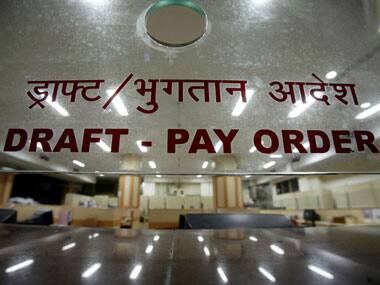By Rajashekara V Maiya Over the past couple of years, banks have learned the hard lesson that size doesn’t matter. If analysts have got it right, by 2020, 32 percent of banking revenues and 7 to 9 percent of profits will have gone away to digital, disruptive, non-bank providers. This trend of unbundling of profitable niches of the banking business by FinTechs, startups, and other non-banks, will only gather strength in 2016. Besides thwarting direct attack from such providers, banks should also be wary of the million-zero aggregators, who have the scale, reach and technology muscle to easily invade the financial space. The only way traditional banks can survive this onslaught is by matching the capabilities of these new-age rivals. That means providing a great banking experience to customers, characterized by choice, flexibility, speed, convenience, availability, access, personalization and economy. [caption id=“attachment_2522646” align=“alignleft” width=“380”]  Representational image. Reuters[/caption] And that is only possible when the conventional bank turns truly digital. In our view, this is the banking industry’s biggest imperative today, and therefore the driving force behind the major trends in the coming year: Customer experience – The king-maker Customer experience, more than anything else, will drive acquisition and retention. Hence every aspect of truly digital banking, from product to process to business model, must be re-examined from this perspective. The future belongs to banks that excel in this area. Here, the examples of Commonwealth Bank, which has changed the mortgage process experience for customers through its property app, and Russia’s Alpha Bank, which has linked interest rates to healthy lifestyle choices, are worth citing. In 2016, we see more banks adopting such experience best practices. Automation amidst the autonomous To deliver such experiences, banks will have to rely on an end-to-end fully automated ecosystem working behind the scenes. Where the focus of automation used to be on mechanization or process improvement or cost control, it will now shift to the delivery of unmatched experiences to customers. These experiences shall be delivered by automated processes, systems and providers working seamlessly together, and will be people-less, paper-less and cash-less to a great extent. Obviously this requires banks to make a quantum leap. There’s also another challenge looming in the form of automated devices, like the robo-advisor, which in the Internet of Everything, will act more and more autonomously. The truly digital bank will need to find ways to work with and influence such machines in future. Insights drive banking New-age providers have taken the analytics route to understand banking customers and then take hold of them. Banks have vast stores of data within and outside their organizations. In 2016, this data must be used extensively to product insights that can then be used to improve experience and efficiency, mitigate risks, prevent fraud etc. Apart from leveraging analytics for themselves, we believe banks must also share it to benefit others, including their own customers, ecosystem partners and their customers’ customers. Ecosystem – the new universal bank A recent EFMA- Infosys study indicates that banks are realizing the value of collaborating with startups. Trends, such as open innovation and API, are gaining importance to render banking a service that is provided by an entire ecosystem of financial and non-financial providers, rather than a single monolithic banking institution. We expect 2016 to reinforce this trend of the ecosystem becoming the universal bank. Cyber-security imperative Reportedly, every bank account faces an astounding 800,000 attacks daily. This threat will only get worse in the face of increasing digitization. The banking ecosystem needs to act decisively and cohesively to improve security and trust. Here, apart from advanced analytics and biometric technologies, advances like Blockchain can really improve the security of transactions. So, in 2016 Blockchain is one of the technologies to watch out for. The others are IoT, Cloud, APIs, and the latest advances in mobility, such as wearables, bio-sensors, and cognitive computing. The author is Associate Vice President & Head – Product Strategy & Pre-sales, Infosys Finacle
in 2016 Blockchain is one of the technologies to watch out for. The others are IoT, Cloud, APIs, and the latest advances in mobility, such as wearables, bio-sensors, and cognitive computing.
Advertisement
End of Article
Written by FP Archives
see more


)

)
)
)
)
)
)
)
)



